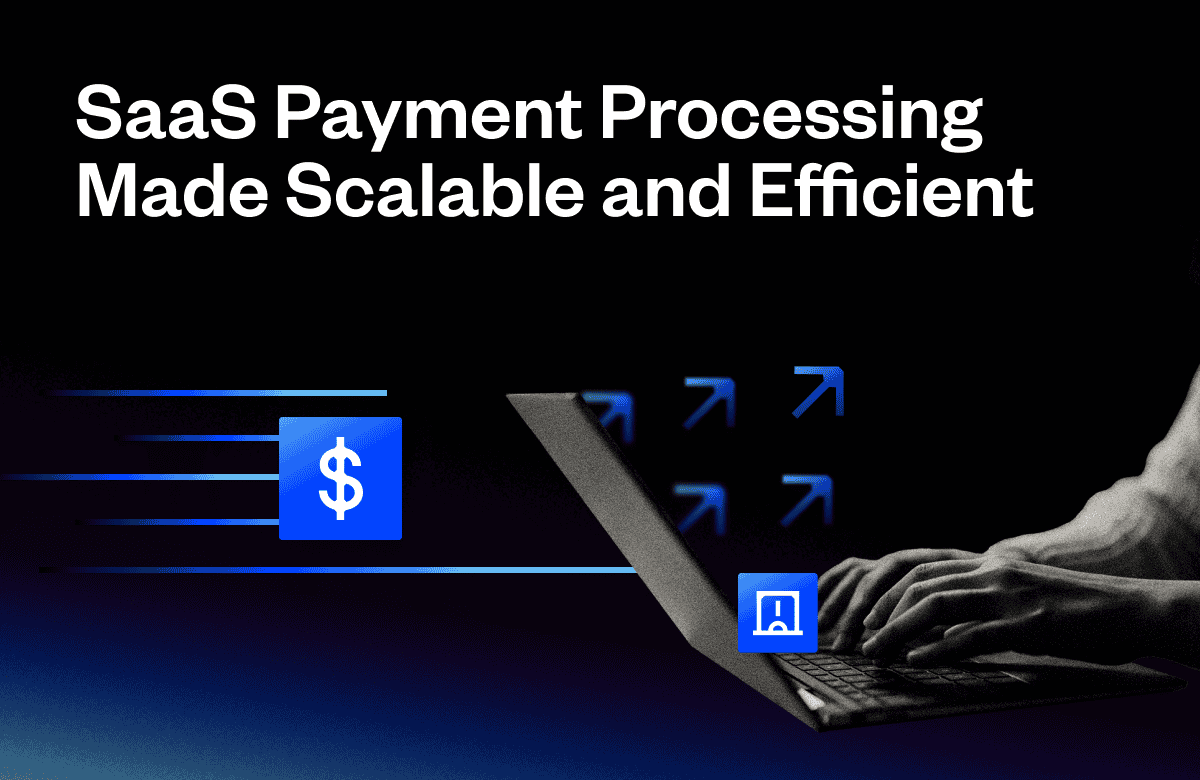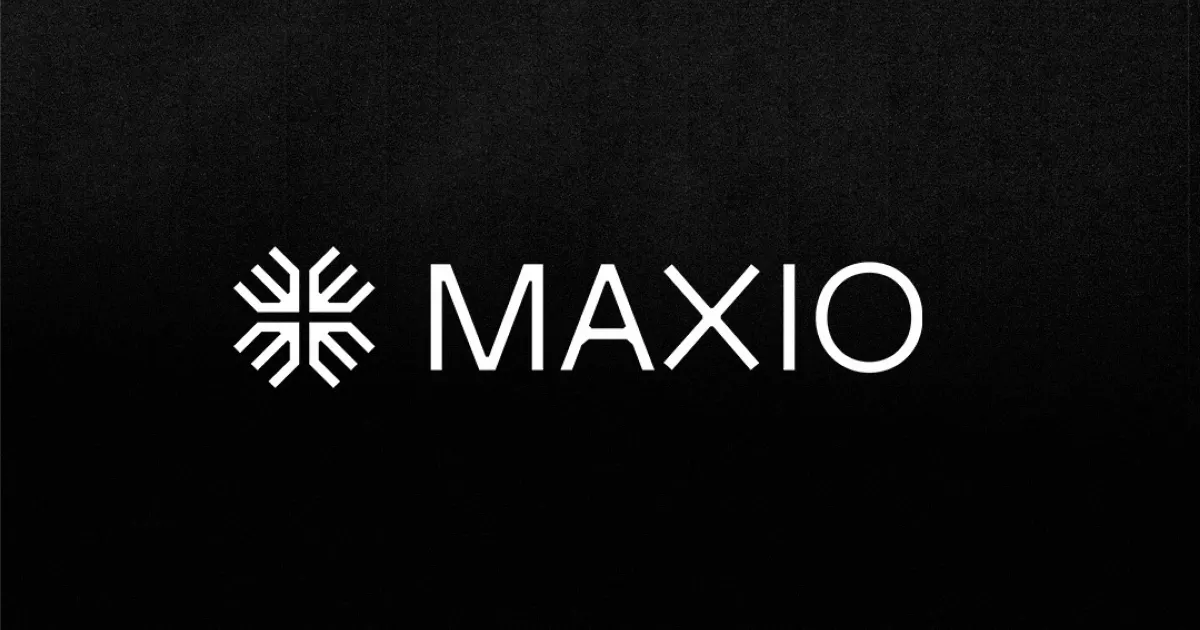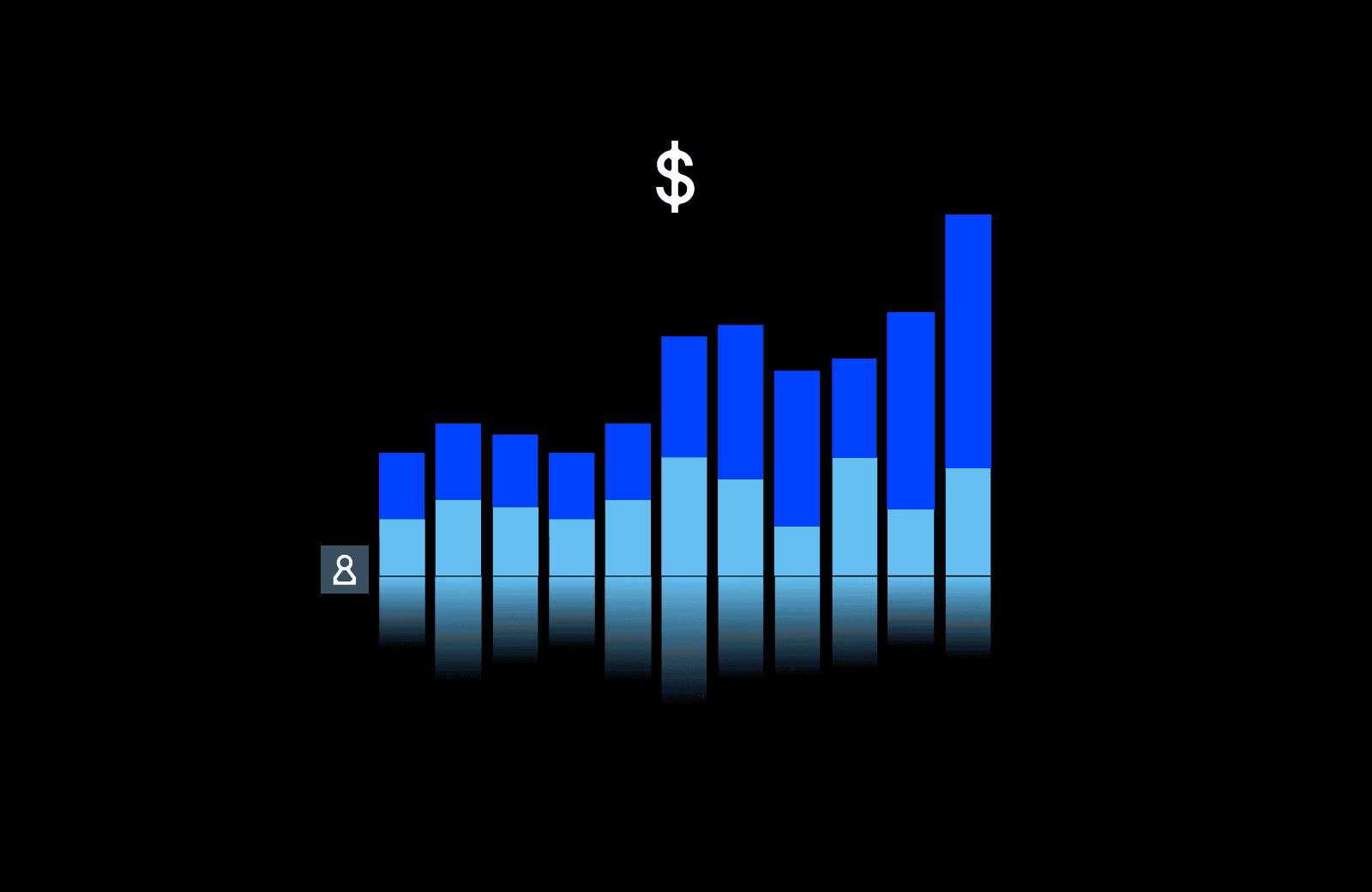The health of any early-stage or growing SaaS business ultimately boils down to its ability to manage its cash inflows and outflows. To do that, you need to have the right SaaS billing and SaaS payment processing software at your disposal.
However, managing payments goes far beyond simply collecting money from customers. It’s about creating a seamless experience for both your business and your users—a process that encompasses subscription management, recurring billing, and integrations with the rest of your existing tech stack. SaaS payment processing plays a pivotal role in ensuring this process runs smoothly, particularly as companies scale.
For many SaaS companies, however, SaaS payment processing can quickly become a bottleneck as they start to scale. That’s why we’ve put together this guide to help you understand the tools you need, how to find them, and how they’ll ultimately impact your business’s bottom line.
What is SaaS payment processing?
At its core, SaaS payment processing is the backbone of how subscription-based businesses handle transactions. It includes not only the act of processing payments but also managing the lifecycle of customer subscriptions, automating recurring billing, and ensuring smooth communication between various systems such as CRMs and accounting tools.
For example, at Maxio, our financial operations tools allow two-way syncs between Maxio and platforms like Quickbooks, Salesforce, Hubspot, and NetSuite. Not only does this make it easier for our users to maintain consistent cash flow, but it also makes it easier for them to track data across the entire order-to-cash lifecycle.
The challenges of SaaS payment processing and management
When launching a SaaS product, it’s common for companies to focus solely on setting up a payment gateway to accept payments. After all, unless you can charge users for your service, you don’t have a business.
But while this might work initially, you’ll need more than just a way to accept payment as you start to scale. Otherwise, you’ll be left dealing with the following operational gaps:
- Subscription complexity: Managing recurring payments, free trials, upgrades, downgrades, and cancellations can overwhelm your teams without the right SaaS billing and payment processing tools.
- System silos: Disconnected SaaS payment processing and billing systems can lead to inefficiencies such as manual data reconciliation and errors. A dedicated tool like Maxio can provide or connect these disparate systems in one place so you can avoid these issues altogether.
- Poor user experience: Customers expect a seamless billing process, including multiple payment options and transparent invoicing. SaaS payment processing systems can improve this experience significantly.
Why billing needs to be a part of your holistic business strategy
It’s easy to dismiss SaaS payment processing and billing as a back-office function that’s necessary to keep cash flowing. But by viewing billing as an integral part of your business strategy rather than isolated payment tasks, you can quickly improve your overall user experience and retain users for a longer period in the process.
For example, integrating billing and payments with subscription management allows you to automate time-consuming tasks like invoice generation and payment reconciliation. This ensures that your operations run smoothly and your finance team can focus on higher-value activities—rather than spending all day chasing down payments.
What’s the difference between SaaS Billing Software and a SaaS Payment Processor?
Before you start searching for tools to manage payments for your SaaS business, you need to understand the differences between SaaS billing software and a SaaS payment processor. While these tools often work hand-in-hand, they each serve an individual purpose and are designed to address distinct aspects of your payment infrastructure.
Let’s break down the key differences and why SaaS companies should consider an integrated approach for long-term scalability.
What is a SaaS Payment Processor?
A SaaS payment processor is a service provider that handles the technical aspects of accepting payments. These processors ensure that your transactions are both secure and accurate, and enable you to accept a variety of payment methods, such as credit cards, ACH transfers, or digital wallets.
Key features of a payment processor:
- Transaction handling: Processes payments securely and quickly.
- Subscription payments: Manages recurring transactions for subscription-based pricing models.
- Integrations: Connects to billing platforms for seamless invoicing and data flow.
- Cost structure: Typically charges a percentage of payments processed plus a fixed transaction fee (e.g., 2.9% + $0.30 per transaction).
What is SaaS Billing Software?
On the other hand, SaaS billing software takes a broader approach by handling the lifecycle of customer billing. It’s designed to automate complex billing tasks, such as calculating subscription charges, managing usage-based pricing, generating invoices, and integrating with payment processors to collect funds.
Key features of SaaS billing software:
- Subscription Management: Handles upgrades, downgrades, cancellations, and free trials.
- Invoice automation: Creates and sends invoices with calculated line items and taxes.
- Pricing flexibility: Supports multiple pricing models, such as flat-rate, usage-based, or tiered pricing.
- Data insights: Provides financial reports and dashboards for strategic planning.
- Cost structure: Often involves a fixed monthly fee, a percentage of total billings, or a combination of both.
SaaS billing software vs. Payment processors
| Feature | Payment Processor | Billing Software |
| Primary purpose | Processes and secures payments | Manages subscription lifecycles and invoices |
| Handles recurring billing | Yes, but limited to payment execution | Yes, including detailed invoicing and usage tracking |
| Supports pricing models | No | Yes, including tiered and usage-based pricing |
| Integration with other systems | Limited | Extensive, connects to CRMs, ERPs, and payment gateways |
| Cost structure | Percentage of transactions + fixed fee | Fixed monthly fee or percentage of billings |
Should you pick a billing platform or payment processor first?
When building the payment infrastructure for your SaaS business, one of the first decisions you’ll face is whether to prioritize a billing platform or a payment processor. While both of these tools are essential for managing your financial workflows, starting with the right solution can set your business up for smoother operations and greater scalability.
Why this decision matters
Choosing the right starting point impacts more than just your payment process. It affects your company’s ability to:
- Simplify complex tasks like subscription management and recurring invoicing.
- Ensure timely payments and reduce revenue leakage from failed transactions or manual errors.
- Improve collaboration between your finance and product teams by automating workflows and reducing friction.
- Provide your C-suite with better financial data for forecasting and decision-making.
The case for starting with a billing platform
Based on our work with over 2,000 subscription businesses, we’ve learned that most SaaS companies benefit more from starting with a holistic billing platform rather than a standalone payment processor. Here’s why:
- Holistic management: A billing platform manages the entire subscription lifecycle, from invoicing to revenue recognition and gives your business a comprehensive tool for scalability.
- Flexibility: Most billing platforms integrate seamlessly with multiple payment gateways, allowing you to choose the processor that best fits your needs down the line.
- Scalability: As your business grows, a billing platform supports advanced pricing models, international payments, and detailed reporting—features that many payment processors don’t offer.
- Automation: By automating invoicing, payment reminders, and reconciliation, billing platforms free up your team to focus on strategic initiatives.
The pros and cons of each option
| Factor | Billing platform first | Payment processor first |
| Ease of setup | Moderate complexity, but covers more functions upfront | Simpler to implement but limited in scope |
| Scalability | High: supports complex pricing models and growth | Low: may require switching or adding tools later |
| Integration | Connects to multiple payment gateways | May not support billing platforms out of the box |
| Cost efficiency | Streamlines operations, reducing manual tasks | Limited to transactional functions |
| Data insights | Offers detailed financial reporting | Basic payment data only |
What about building your billing system?
Some SaaS startups opt to build their own billing infrastructure to save costs or achieve greater customization. However, this approach often presents significant challenges as the business scales.
This is because custom systems frequently lack the flexibility to support complex pricing models or international payments, creating scalability issues. The reliance on manual processes and limited automation can also lead to inefficiencies that slow down operations. Additionally, maintaining and updating a custom-built system demands considerable developer resources—not only does this take your devs away from other high-impact activities, but it can result in high maintenance costs that will outweigh the savings of building your own system.
How to pick the recurring billing platform to manage your SaaS payment processing
Selecting a recurring billing platform is a pivotal decision for SaaS companies. A well-chosen platform streamlines your billing processes, supports your growth goals, and integrates seamlessly with your existing tech stack. But with so many options on the market, how do you determine the best fit for your business? Follow this step-by-step guide to make an informed decision.
Step 1: Identify your business needs
The first step in selecting a platform is to thoroughly assess your business needs. Are you still finding product-market fit? Do you have an ample cash runway in case things go south? Are you rapidly expanding your customer base?
Based on these answers, consider the pricing models you currently use and whether or not you’ll need support for flat-rate, tiered, usage-based, or hybrid strategies. For example, we built Maxio with this kind of flexibility in mind to make it easy to adapt to complex pricing structures as your business evolves.
You should also think about how much automation you need—automating tasks like invoicing, payment reminders, and reconciliation can significantly enhance the efficiency of your day-to-day operations. Additionally, you’ll want to evaluate the integrations that are vital to your workflows, such as CRMs, accounting software, or different payment gateways.
Maxio connects seamlessly with leading tools like Salesforce and QuickBooks to ensure that you can continue using all the preferred tools in your tech stack. And if global expansion is part of your strategy, Maxio’s support for multi-currency transactions and compliance with international tax regulations makes it an excellent choice for SaaS businesses operating on a global scale.
Step 2: Compare key features
Once you’ve outlined your business needs, you should then compare the key features of the different billing platforms you’re evaluating. We even put a list together of the best subscription billing tools if you need a place to start your search. As you start evaluating these different tools, look for flexibility in pricing models and the ability to adapt them based on changes in your billing strategy. For example, if you’re finding it difficult to attract users downmarket, you may consider setting up a free trial or freemium pricing model.
Step 3: Evaluate the total cost of ownership
Finding the right billing tool with the features you need is only half the battle. After you’ve found the tool(s) that are a good fit for your business, you’ll need to take your budget into account.
To ensure you’re getting a solid return on your software investment, evaluate the total cost of ownership of this new tool, including subscription fees, billing percentages, and any additional charges for premium features or integrations.
And while price does matter, be sure to prioritize the value of your software—opting for a platform that may cost more upfront but saves time and reduces errors can yield a higher ROI in the long run. And if you’re still concerned about finding the right tool for the right price, Maxio’s transparent pricing structure ensures you understand the value you’re getting, without hidden fees or surprises.
Step 4: Review customer support and scalability
Customer support and scalability should also influence your final decision. You’ll want to choose a platform that offers reliable 24/7 support, comprehensive documentation, and the ability to scale with your business as transaction volumes and complexities increase. Maxio’s dedicated support team is available to guide you every step of the way, and our platform is designed to grow with your business, supporting higher transaction volumes and increasingly complex workflows.
Step 5: Test the platform
Finally, before you make a final decision, take advantage of any potential free trials or demos to test the platform in real-world scenarios. After all, just because a tool looks great on paper, doesn’t mean it will offer the same value once you take a look under the hood.
If you do manage to sign up for a free trial or demo, assess the user interface for ease of use, how the platform performs under typical workloads, and how well it integrates with your existing systems.
At Maxio, we believe this is the best and only way to ensure you’re getting true value out of your billing system. Sign up for a free trial if you want to see if Maxio is the right billing solution for your SaaS business.




